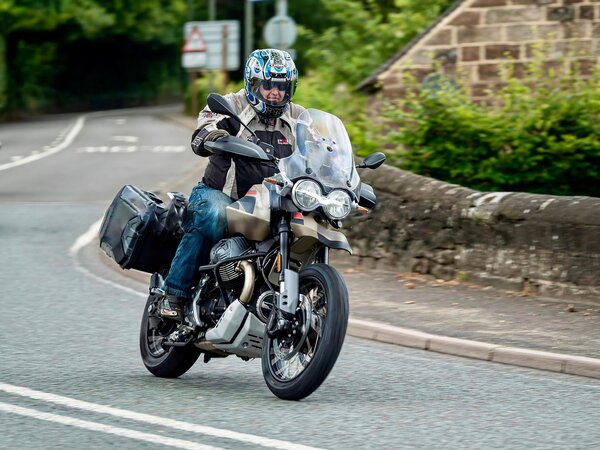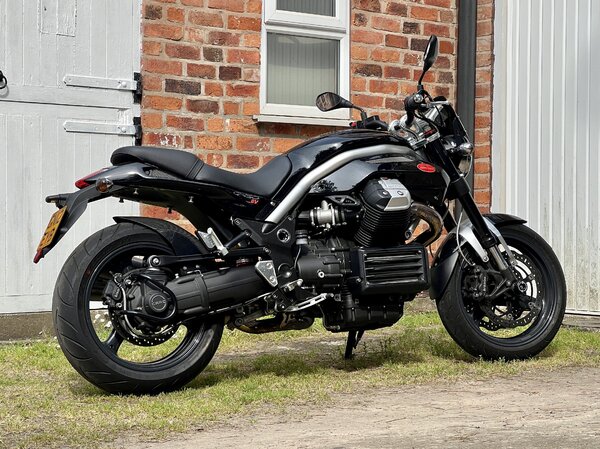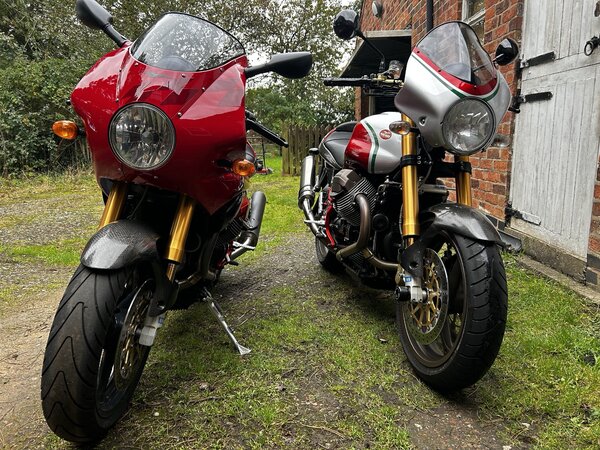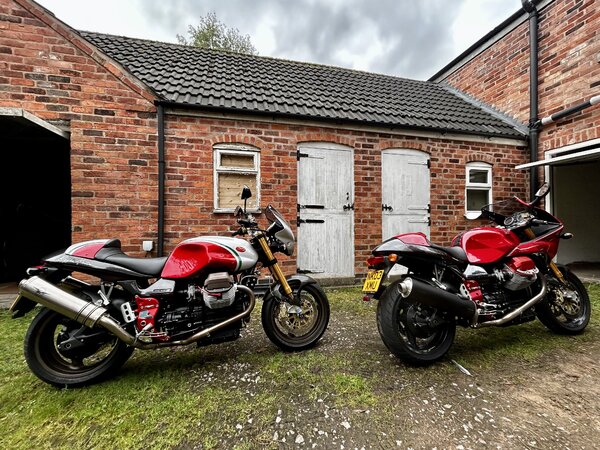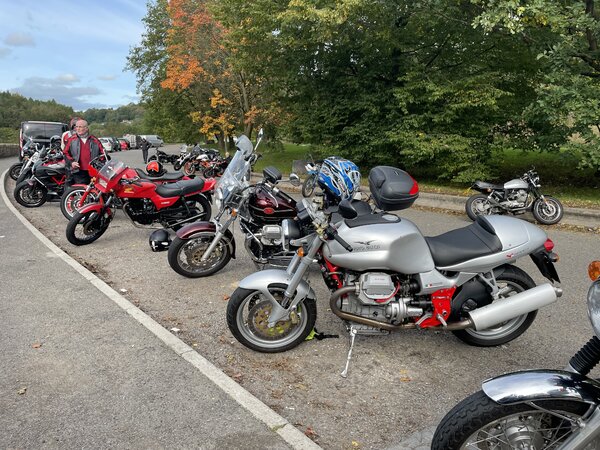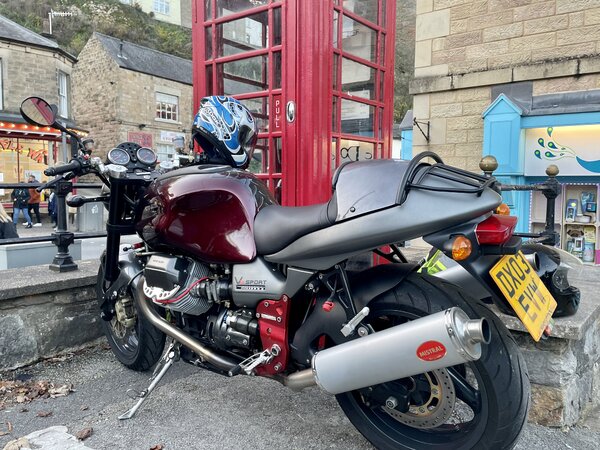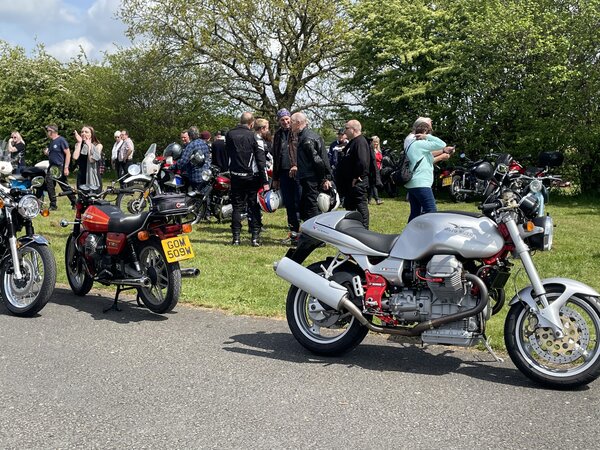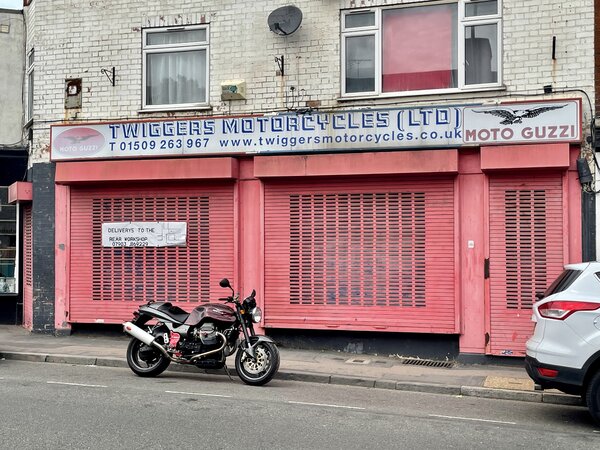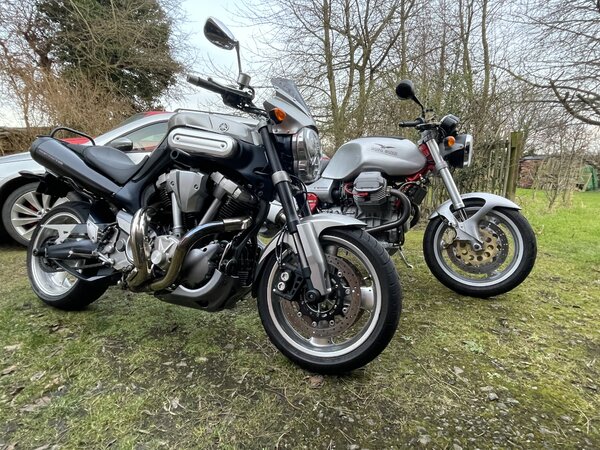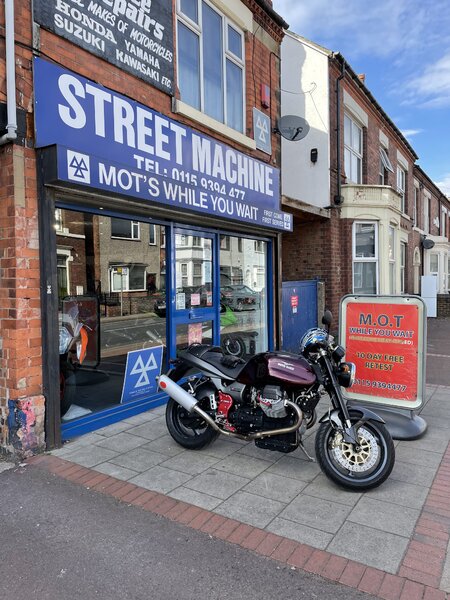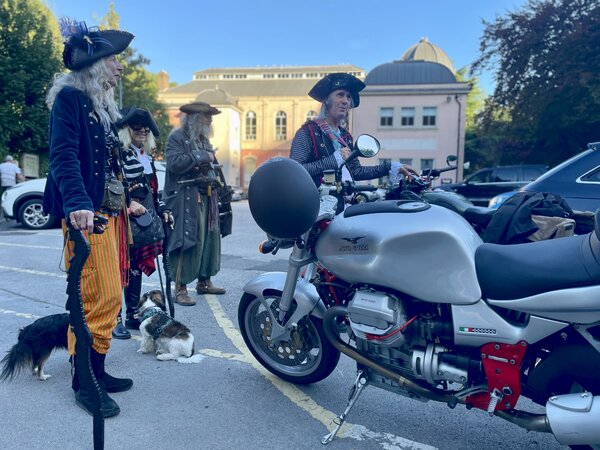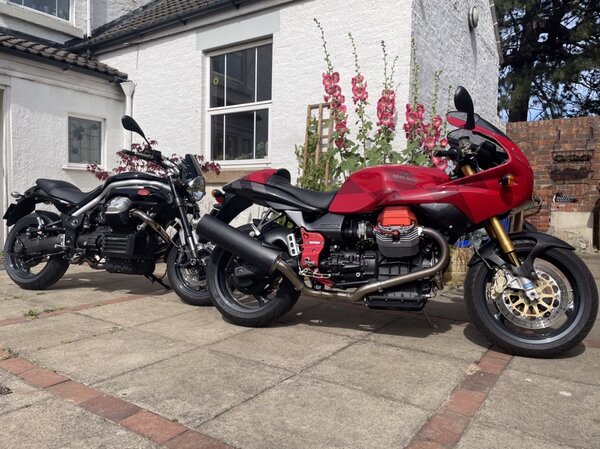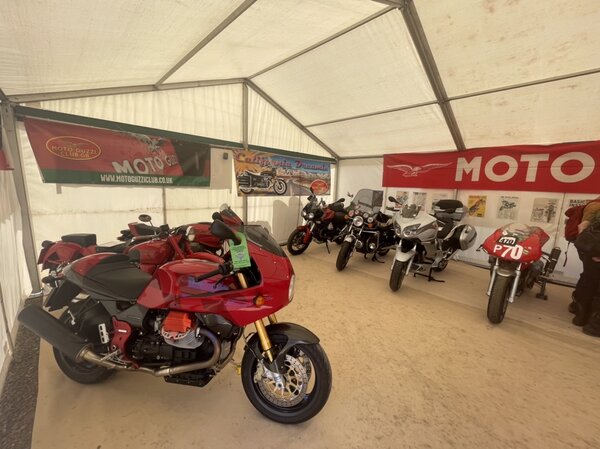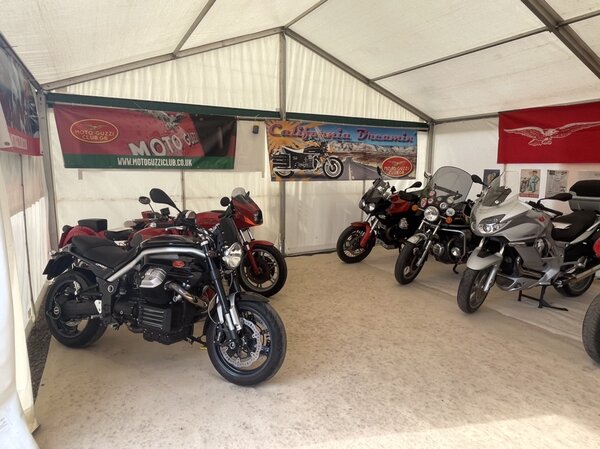-
Posts
1,393 -
Joined
-
Last visited
-
Days Won
29
Content Type
Profiles
Forums
Events
Gallery
Community Map
Everything posted by po18guy
-
OK, here's one for the Guzzilluminati: Bike came with forks slightly askew. Dinged bar end tells me a garage tip over. Some say to loosen everything beneath the upper triple and rock the forks back into alignment, check for square and tighten. But, this was for curb impacts, where the force came form the wheel. What if the twisting came from the bars?
-
Looked like that to me too. Then I had cataract surgery.
-
Hey! What are you talking about?
-
To my eyes, the Scura R (Scura Rossa?) is the most fantastic color combination. The Coppa a close second. Somewhere here, I read that the lowly Ballabio was made in about 223 copies. But, in the Aprilia days they had so many flavors of the same ice cream that can any one actually be called 'mass production'?
-
Makes me want to feed my V11 SlimFast instead of premium.
-
Reasonably nice V7 cafe custom, being prepped for a new owner and some track time.
-
As to access, yes. I cut easily. I bleed easily. I like neither, so off the wheel came.
-
Rather than LeMans, the bikes could have been named the LeMarquis de Sade. Rear wheel off, you can almost reach it without pain. Wiggling the petrified cap off and actually connecting a bleeder hose - then undoing and replacing the whole mess - was my exercise for the month. But, the clutch has worked faultlessly ever since.
-

Moto Guzzi V100 Sport Tourer: water cooled, 120 HP (26th of August 2021)
po18guy replied to p6x's topic in Newer models
I think you might have nailed the reasoning down here. -

Moto Guzzi V100 Sport Tourer: water cooled, 120 HP (26th of August 2021)
po18guy replied to p6x's topic in Newer models
No doubt that there is a fair amount of Piaggio puffery involved in this new model. It almost seems that they spent as much on the promo video as they did on the bike itself. As to the aero (trim tabs actually), one needs only ensure that both are either out or in when the Tyco relay goes. -

Moto Guzzi V100 Sport Tourer: water cooled, 120 HP (26th of August 2021)
po18guy replied to p6x's topic in Newer models
Any aero improvement on bikes is huge (Euro 6,7,8 etc.) as bikes are pushing a barn door as compared even with the blockiest of cars. A couple of cylinders jutting out into the airstream, liquid-cooled or not, is no help as far as aero goes. Since many members here will run out and purchase the first bikes on sale, we will soon know. Right...??? -

Moto Guzzi V100 Sport Tourer: water cooled, 120 HP (26th of August 2021)
po18guy replied to p6x's topic in Newer models
Boat tail bullets. Much more aerodynamic. Greatly reduced drag coefficient. Sometimes the gains are behind rather than ahead. -
Have been told to soak my head often enough. If one was doing a rotisserie restoration, simply inverting the bike and dunking the fins would do it. Has anyone tried Stoddard solvent?
-
Too bad that motor oil was not silver. Who'd know?
-
Oops. So the fins are painted silver? Well, maybe one of the citrus-based cleaners - they are more benign.
-
The Italian saga never disappoints - and if it does, not permanently. With a storied racing history the various Morinis have always held my attention. As expected the company's solvency and production has always resembled an EKG printout. When the 1200 came out, I was extremely interested, but they are avoiding North America to this point. Now they have a 660cc 270 degree parallel twin that seems suspiciously similar to Aprilia's. ADV and a standard about to be introduced. Just wondering if any of the Guzzisti are also Morinisti?
-
If it is restricted to a relatively small area, some of the more volatile chemicals can be used on a Q-tip or cotton swab. I have found that some experimentation is needed to remove various stains. If it can soak, it will come off better, but how to soak fins? Maybe soak a strip of paper towel and wrap it around the fin.
-
-
One on eBay for about 250US or so. Couple of scratches as I recall. Think it's from a Ballabio. but, there's that whole border thing. Getting out of Canada? I was just thinking of going there! Oh, wait...
-
A shock bumper. Intended to keep the shock shaft/spring collar etc. from damaging the shock body at full travel. They all seem to be made of a semi-porous polymer, the advantage of which is that the porosity allows them to crumble from the inside out. Here is a link to a site which seems to be bumper central. https://www.resuspension.com/bump-stops/ohlins.html That's the good news. The bad is that one must removed the spring, collar and anything else on the shaft in order to install it. If you live anywhere near a bike suspension shop (often dirt bikes), they do this all the time.
-
Right you are! I guess "C" code was better than "inline 6" code.
-
271HP or 306 if the buyer paid the big bux.
-
C-code means 289 Hi-Po?








